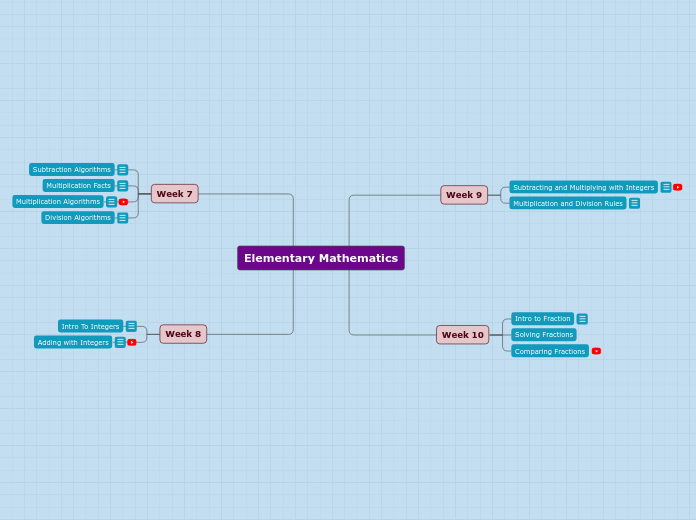
Subtracting and Multiplying with Integers
Subtracting Integers:Remember to say "take away" when pronouncing subtraction problems You show/draw subtraction problems similarly to addition problems, the main difference is that you'll need a zero bank. Multiplication is very similar to subtraction when showing the two. You also need a zero bank with many multiplication problems. See attachment to see examples of showing both subtraction and multiplication problems. Thing to remember:*How many zeros do you need to add to your zero bank? Enough!*Don't add a zero bank if you don't need one!
aMultiplication and Division Rules
How to figure out if a multiplication or division problem's answer will me positive or negative:If the integers have same signs; the answer will be positive!If the integers have different signs; the answer will be negative!As easy as that.Examples: -3(-6)= 182(-5)= -10
Intro to Fraction
Part of the fraction: 7 - how many pieces we have 13 - how big the pieces are See attachment for more.
Solving Fractions
Comparing Fractions
Subtraction Algorithms
Subtracting:How to pronounce subtraction problems: "6 positives take away 7 negatives"Start with a zero bank if you need it!Always keep positives on top and negatives on bottom (and color code them if possible!)Alternate Algorithms:Expanded FormEach place value gets its own numberEx. 467-204 would look like 400+60+7200+ 0 +4- 200+60+7 267Equal AddendsAdd the same number to both integers to make them easier to subtractEx. 53 +3 = 56 -27 +3 = - 30 26
Multiplication Facts
This week we learned about how teachers should teach their students their multiplication facts!Click the attachment to see the order!This order is the most effective because it goes in order of difficulty. This way, students who don't easily get their 4 or 6 multiplication facts can still do well on quizzes because they'll already know their 5 and 10 multiplication facts. Things to know:Timed quizzes aren't bad, but don't track students' achievements; track their improvement. Flash cards are good, but make your own!Most "tricks" aren't great, but there are a few handy things to know that don't quite qualify as "tricks".
Multiplication Algorithms
Multiplication and subtraction are taught at the same time because they both require zero banks!Alternate Algorithms for Multiplication:Expanded form: each place value gets its own numberEx. 35x2830+5x 20+8First: 20x30= 600Second: 20x5= 100Third: 8x30= 240Last: 8x5= 40 980 Left to Right: similar to expanded but you don't write out each place value individually.Ex. 47 x 53First: 50x40= 2000Second: 50x7= 350Third:3x40= 120Last: 3x7= 21 2491
aDivision Algorithms
Best way to pronounce division problems: 15÷5 would be "15 divided into 5 groups" Alternate Algorithms for Division:Repeated subtraction: uses skills students are already comfortable with! See Attachment 1Upwards division: doesn't ave any confusing formatting See attachment 2
Intro To Integers
Terms:Build: with counters Counters: two sided pieces (red side is always negative)Show: write/draw it out **Positive is always on top and negative is always on bottom **Use zero banks when necessary Example of showing integers with pos/neg signs:Show 3 using 7 counters +++++ - -Show -6 using 8 counters + - - - - - - -
Adding with Integers
Examples of showing addition problems:4+2= ++++ ++ = 6-3+4++++ - - - =1When integers in addition problems get too large to draw out every pos/neg sign we use a different method. See attached photo to see other method.
a